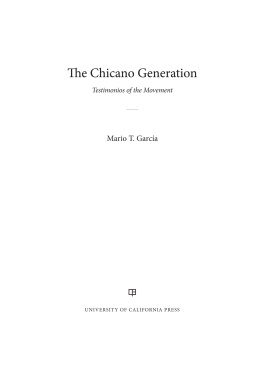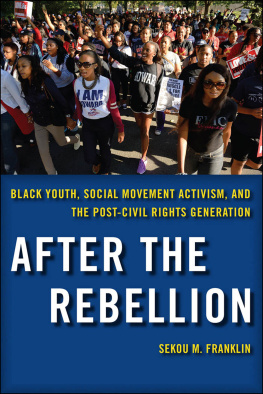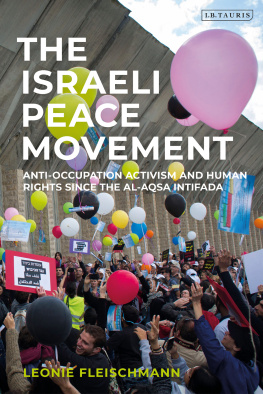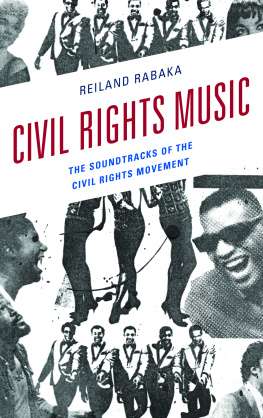Struggle is a never ending process... Freedom is never really won, you earn it and win it in every generation. Women, if the soul of the nation is to be saved, I believe that we must become its soul.
Coretta Scott King
This book illuminates the Sixties activism of progressive women who came of age during the World War II era and were shaped by the continued influence of Popular Front culture. This work highlights first of all, womens activism that has often been peripheral and one-dimensional in peace movement historiography that dramatizes mens antiwar and antinuclear activism in national organizations. In Chicago, a center of anti-war, civil rights, and New Left movements, this generation of women leaders came to their involvement in the movement through previous experience in mixed-sex Leftist movements and local civil rights campaigns. Independent of formal sectarian organizational affiliations, these women re-emerged in the 1960s as leaders in four organizations: Women Strike for Peace, Women Mobilized for Change (a subgroup of the Metropolitan YWCA of Chicago), Womens International League for Peace and Freedom, and the Chicago Peace Council.
Participant historians of Sixties New Left, peace, and feminist movements of the Sixties often failed to recognize political differences amongst mature activists and lumped them together under the heading Old Left. The Sixties New Left generation regarded the Old Left as defunct and believed the younger generation had re-energized socialism in the United States in the early 1960s. The issues most central to this generation were solidarity with the working class, support for cooperation across racial and class lines, a belief that the federal government should play an active role in providing for the poor and marginalized, and opposition to militarism at all levels.
This generation of mature women challenged gender expectations and contributed to the political culture of the Sixties. They encouraged a new generation of middle-class women to see dissent as a natural extension of politics. Aware of the limited opportunities for leadership in mixed-sex social movements, this generation of women worked within womens groups where they could play leadership roles. Seasoned women organizers practiced leadership within womens groups and conducted much of the daily organizing that sustained the mixed-sex movement. These women passed on to a new generation the art of lobbying and writing effective letters, facilitating meetings, newsletter writing, and fundraising. These progressive and radical women also evinced grassroots survival skills honed through years of organizing in precarious political times: promoting ones cause to a hostile media, cajoling ones peers to come out for yet another vigil or demonstration, negotiating with a recalcitrant city bureaucracy for permits, and persuading and compromising in politically diverse coalitions. In contrast to many student left and Marxist groups that practiced political and economic autonomy as a rejection of legislative politics, these womens groups, particularly WILPF and WMC continued to build relationships with politicians while they strengthened support networks of activist relationships and progressive organizations. By 1968, young and old women activists argued that dissent was not in itself subversive, as the government insisted. Instead, bringing minority views into mainstream politics was an integral part of a healthy democracy.
Middle-aged Popular Front women activists and their politics influenced the structures, political platforms, and tactics of Sixties peace and civil rights movements. This generation of independent leftist women activists calls into question the chronological and organizational boundaries of the Sixties decade. These long-term activists invite us to contemplate what conditions are necessary for the persistence of political commitment that transcends eras or social movements. Contrary to popular wisdom that adults become more conservative over time, middle-aged leftists reveal that while their youthful dedication to civil disobedience and dogma diminished, their commitment to socialismand in particular loyalty to a broad-based movement opposed to racism, economic injusticeand militarism remained constant over time. Black and white womens educational work and community organizing, outside, and within womens organizations, were instrumental to the sustenance of political dissent in Chicago throughout the post-war era.
The World War II generation is popularly portrayed as self-sacrificing and humanitarian. Historiography of the post-war anti-nuclear movement locates the origins of post-war struggles against racism and militarism in the activism of World War II conscientious objectors. Historians argue these World War II resisters, influenced by Gandhian nonviolence theories and methods, brought Gandhian nonviolence to American social movements. The women in this work organized independently of World War II resister-led organizations and alternative cooperative communities. These women activists challenged cold-war isolation and political polarities both locally and internationally. This generation of women did not identify as feminist, yet they advanced gendered priorities as they challenged hierarchies of power, and advocated for womens social advancement. Their activism paved the way for the groundswell of womens activism in 1980s social movements.
In contrast to the conscientious objectors shaped by radical pacifism, many of this generation of women activists became involved in progressive politics through the influence of the Jewish Left. The women featured in this book were born between 1915 and 1925, the majority coming of age during United States involvement in World War II. The leaders of these Chicago groups were Jewish, the second-generation children of immigrants from Eastern Europe who were part of a massive wave of Jewish emigration to the United States from 1881 to 1924. Frequently, women recalled they first learned of socialism or socialist culture through their families. Predominantly working class, these women came to civic involvement indirectly through Jewish socialist culture. One did not have to be a member of the party to take in socialist values. Historian Jonathan Kaufman claims on Chicagos Southside the talk of socialism and equality... blew all around. Leftist Jewish socialism was also a strong influence on womens commitment to racial justice. The connection between Judaism and the obligation to help all oppressed was because you were strangers in the land of Egypt. Both blacks and Jews were members of a Diaspora.
Many women of the Popular Front generation did not identify as feminist in the Sixties. Their understanding of gender is consistent with the term left feminism, coined by historian Ellen DuBois. These women also benefited from changing social opportunities for women in the twentieth century. Most were the first in their families to attend university, and many earned degrees. These women held traditional female professions: teaching, social work, and clerical positions. Consistent with left feminism, these women sought opportunities to expand womens influence.
Anticommunism persisted in Chicago long after it decreased in strength elsewhere in the early Sixties. The Popular Front generation carried the scars of anticommunist governmental repression into the 1960s. Activists often formulated strategy and tactics in defense of public perception that peace proponents were communists. Sectarian differences often surfaced around participation in coalitions with European and Asian peace activists who had ties to the communist-led peace movement. At times, these ideological differences circumscribed their local associations, as anticommunists feared association with communists would discredit their cause. Personality clashes and resentments over power struggles of 1930s/1940s led different groups of women to decide not to work with one another. Yet, the story of anticommunism was not entirely negative. Local activists contributed to the weakening of anticommunism politically and its social impact. Both during the 1962 HUAC subpoenas of East Coast WSP members in Washington and the 1965 Chicago HUAC subpoenas, progressives banded together to support each other and limit the economic and social damage that often accompanied these political events. These women found ways to organize and structure leadership in non-hierarchical ways to avoid organizational fragmenting.









